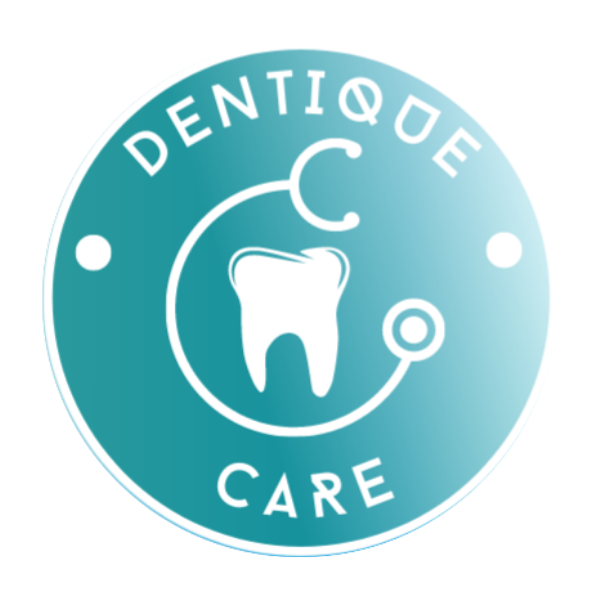- Home
- Best Orthodontics in Lucknow

What Are Teeth Braces or Orthodontic Treatment?
Teeth braces are appliances made of metal or ceramic brackets and are used to straighten teeth.
Teeth braces are installed by the dentist in your mouth to align your misaligned teeth. Teeth braces comprise wires (stainless steel or NiTi) and brackets (metal or ceramic), which are attached to your teeth with adhesives called composites.
Wires stay in bracket slots with the help of some elastics or without elastics. Teeth braces come under the specialty of Orthodontics and are also known as Orthodontic treatment.
Teeth Braces Side Effects: Can Braces Change Your Smile or Face? YES, FOR SURE.
We have had many patients who don’t even laugh because they think they have bad teeth. Some cannot even raise their eyes to talk or smile naturally.
Braces Can Change Your Appearance, Smile, And Your Life.
Early treatment can even help to change the way you breathe, the position of your lips, improve your facial aesthetics, and your self-confidence. By aligning teeth and changing how your teeth overlap (reducing overbite and overjet), braces change how your lips lay against your teeth. There are limitations to how much can be changed, which is why orthognathic surgery is sometimes done in conjunction with orthodontics.
When you are choosing braces treatment, the very first thing that comes to mind is which type of braces you are choosing and the time period required to treat your problem. Therefore, the cost of braces varies; there is no fixed cost.
The types and costs of braces are as follows:
Different kinds of teeth braces for teenagers used by us:
- Metal Braces: Traditional braces. Their price ranges from ₹18,000 to ₹30,000. You have to pay ₹2,500 as a down payment and then ₹1,000/month.
- Ceramic Braces: Tooth-colored braces. Their price ranges from ₹30,000 to ₹45,000. You have to pay ₹5,000 as a down payment and then ₹2,000/month.
- Self-Ligating Braces (Metal): Metal braces with a door to hold the wire. Their price ranges from ₹40,000 to ₹55,000. You have to pay ₹10,000 as a down payment and then ₹3,000/month.
- Self-Ligating Braces (Tooth-Colored Ceramic): Same as above but tooth-colored. Their price ranges from ₹70,000 to ₹1,00,000. You have to pay a down payment of ₹35,000 and ₹3,000/month afterward.
- Invisible Braces/Invisalign/Aligners: Removable braces. Their price is around ₹1,00,000 if teeth extraction is not required and around ₹1,50,000 if teeth extraction is required. You have to pay the whole amount upfront.
Teeth Braces Treatment Procedure for Teeth Alignment, Step by Step
First Step: Dentist Consultation
We will analyze your teeth position and plan your treatment. For planning, we will take your impressions and photographs for further analysis. Some X-rays may also be advised to check for any bone-related problems.
Second Visit: Repairing Any Damaged Teeth
We will first clean your teeth and fill any cavities.
Third Visit: Braces Installation
After planning and selecting the type of braces, we will start placing them on your teeth. For this, we will adhere brackets to your teeth with the help of glue and insert the wire into the bracket.
Bracket installation may require 2-3 visits. After braces installation, we will give you dietary instructions. From then onwards, you will be called every month for wire tightening, extraction, changing of wires, and rubber bands until the treatment is finished.
At the end of the treatment, your teeth will be aligned in the desired position. You will be given a retainer to wear.
The retainer may be removable or fixed. A retainer will help your teeth remain in the same position achieved at the end of orthodontic treatment.
Teeth Braces Age Limit (at 30, 40, 50, or Teenage)
- There is no age limit for getting braces.
- The only criteria to get braces is healthy bone and gums. If your gums are not healthy at age 15, then you should not get braces. However, if your gums are healthy at age 60, braces will improve your smile.
- Sometimes in teenage, dentists may advise you to wait for braces until all of your permanent teeth come out.
Teeth Braces Benefits & Function
Teeth braces correct the alignment of your teeth. They:
- Improve facial appearance
- Improve chewing efficiency
- Improve speech problems
- Help to give you a beautiful smile
- Align teeth so that they are easy to clean
Teeth Braces Side-effects or After Effects
There may be a few problems associated with teeth braces such as
- Mild discomfort
- Irritation of gums
- Ulcers
- Difficulty in eating
- Calculus deposit due to improper cleaning
Relapse of treatment if the patient does not wear a retainer.
Teeth Braces Do's and Don't
Do’s :
- Follow up routine of teeth check-ups.
- Do clean your teeth properly with orthodontic brush or inter-teeth brush.
- Do use mouthwash to avoid bacterial infection.
Don’ts
- Don’t bite fruits and vegetables directly with front teeth. Cut them into pieces.
- Don’t chew sticky food or hard candies.
- Don’t chew on chewing gums.
- Don’t miss appointments.
Teeth Braces Extraction & without
Teeth braces problems can be divided into skeletal and Teeth. In the case of skeletal problem, it can be corrected if it is noticed when the child is 8 to 10 years (early during growth spurts) using orthodontic appliances.
If the patient reports late for the treatment, that is after the period of active growth spurts and growth has completed like a boy after 14 years and girl after 12 years, orthodontic surgery can be performed to correct the defect.
If the person does not want to opt for surgery, the only treatment option left is camouflaging the defect.
This camouflaging can be done by extracting the Premolars, either 1st or 2nd premolar based on the amount of space required which is determined after photographic, model and face analysis. Even in case of a Teeth defect, it can be corrected by extraction followed by taking your teeth inside.
After the teeth are extracted, the space obtained is used to push the teeth back so as to give an effect of normally placed teeth. This going back of teeth is not possible if there is no space available.
This is why u need to extract your teeth. And your Dentist is right. The open bite has a poor prognosis when compared to all the other orthodontic problem.
The treatment options are also not as vast as those available for other defects. There is also an increased chance of relapse post-treatment.
Medical FAQs – Everything You Need to Know
Find clear answers to common medical questions, covering treatment procedures & healthcare insights to help you make informed decisions
Q.1. What Is The Minimum Age For Visiting A Kid’s Dentist?
You should take your child to the pediatric dentist as soon as the first tooth erupts in their mouth, or right around the time your child turns one. Book an appointment with an expert at your nearest Clove Dental Clinic for a pediatric consultation.
Q.2. How Long Should A Child Visit A Pediatric Dentist?
It is mandatory for a child to see a pediatric dentist until the age of 14 because by this time, all of their permanent teeth have grown out. Beyond this, it is the choice of the child and his/her parents. However, it is recommended that a child should visit a pediatric dentist until the age of 16.
Q.3. When Should A Child Start Brushing?
For children, brushing should start with the eruption of the first tooth. However, expert kids dentists advise making sure that the amount of toothpaste should be very small, almost equivalent to a grain of rice.
Q.4. Should Mothers Clean The Mouth Of Babies If There Are No Teeth?
It is extremely important to maintain oral hygiene and keep the mouth clean and clear of germs, irrespective of the age. Mothers can clean the mouth, both upper and lower jaw, of their children with the help of a soft cloth.
Q.5. Is It Normal For Babies To Have A White Tongue?
Most babies have a white coating on their tongue in the initial few weeks, which is completely normal. There is nothing wrong with their oral hygiene.
Q.6. What Is The Importance Of Milk Teeth?
As milk teeth erupt and fall, people often think that they do not matter in the overall part of oral hygiene. However, milk teeth play some really important roles, like:
- They play the primary role of biting, chewing, and grinding the food before digesting it.
- They are also important in speech patterns and training.
- Milk teeth are the basis of the development of the jaw bones and muscles.
- They provide the necessary shape of the mouth and room for permanent teeth to erupt.

